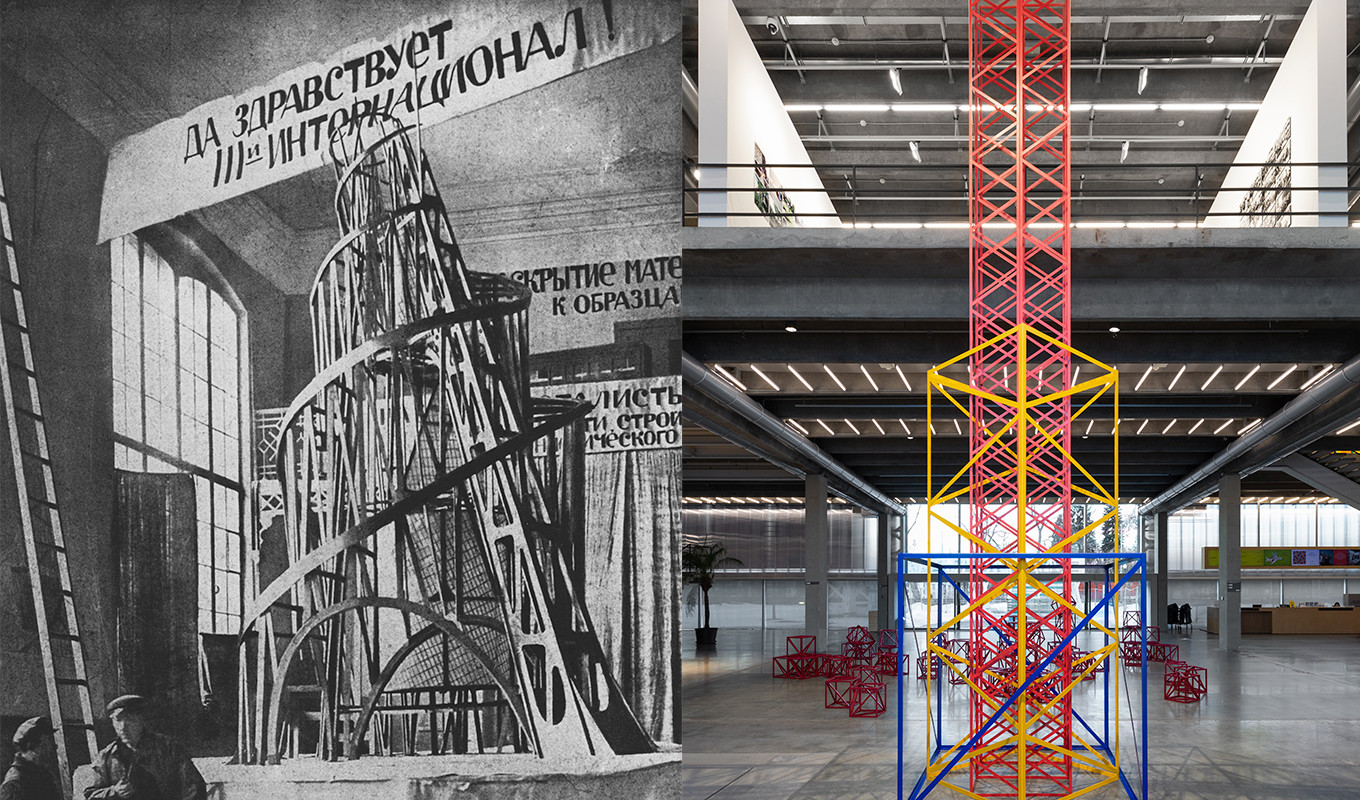Rasheed Araeen.
In the fifty years since Rasheed Araeen made the first small-scale model of Homage to Tatlin in 1968, his practice has undergone many transformations, the artist having been involved in the making of numerous important exhibitions and publications.
Araeen was familiar with the tower thanks to Camilla Gray’s seminal 1962 book on the Russian avant-garde, The Great Experiment: Russian Art 1863–1922. He quickly responded to the egalitarian potential of the structure with his Homage to Tatlin (1968), which until the exhibition at Garage existed only as a project for a large sculpture.
Today, the 7.5-meter sculpture Homage to Tatlin embodies Araeen’s very personal vision of the formal and political ambitions of the Russian avant-garde. Working within a broad cultural context, Araeen sees the avant-garde, along with minimalism and Islamic interlocking patterns, as episodes in the “journey of an idea,” in which geometry was used to produce a situation of equality between the artwork, the viewer, and the artist (and in the future, perhaps, a situation of political equality).
The 400-meter tower designed by Tatlin was to contain four large geometric structures, each with a particular function. A cube at the bottom was intended for large meetings and conferences; a pyramid above it would house the administration of Comintern; then followed a cylinder containing an information center with printing presses and a telegraph; and a hemisphere, whose function is today unknown but which according to some sources may have been designed to hold radio equipment.
In Araeen’s work the tower is distilled into pure movement or, in the words of the constructivist artist Vladimir Stenberg, into an “engineering truth.” What it offers is not freedom of interpretation but freedom from interpretation: the experience of its color, rhythm, and movement is equally accessible to everyone, regardless of gender, race or age.
